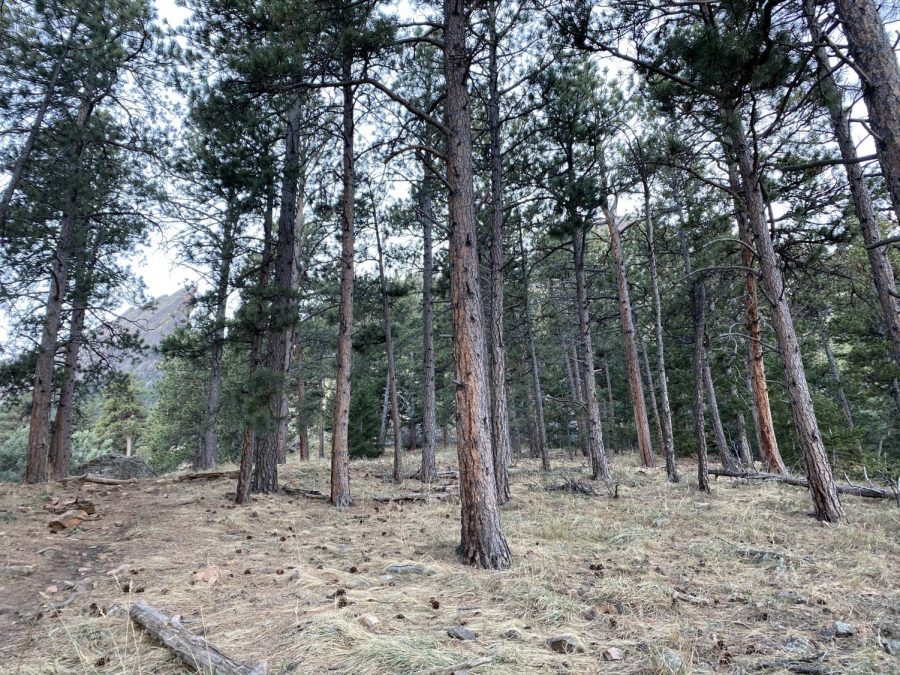Forest Bathing: a New Approach to the Outdoors
Chautauqua open space and hiking trails offer many Boulderites a perfect location for forest bathing!
Most Boulderites are familiar with the outdoors. It is not uncommon to be an avid trail runner or to have hiked multiple fourteeners. But a new approach to the outdoors, forest bathing, strays from the intensity of many outdoor activities. It is all about slowing down, engaging your senses and being in touch with nature.
The idea of forest bathing, or shinrin-yoku, first originated in Japan. Simply put, it is when one immerses themself in nature with the intention of connecting to their surroundings. It was said to have been created in response to the “diseases of civilization” as a rise in urbanization and television limited people’s interaction with nature. Forest bathing became such a prominent part of Japanese culture that the Japanese Ministry of Forestry provided funding for designated land to be reserved as Forest Therapy Bases. On these reserves, there is no running or engaging in any kind of sport—they are solely for appreciating nature and the benefits it carries.
This practice has become widespread across the globe and has made its way to Boulder, Colorado. Recently, I had the opportunity to talk with Darlene Rooney-Keller, a certified forest bathing guide serving our local community. Speaking with her gave me better insight into what exactly forest bathing is and its benefits.
As it turns out, forest bathing is very different from traditional hiking. Perhaps the most important distinction is that with forest bathing, there is no destination. “We are not trying to get to a certain point on the land or the mountain. The destination is more about coming into body-fullness,” says Rooney-Keller. When talking about body-fullness, Rooney-Keller is referring to bringing attention to your senses. With no set agenda or destination, you take time to pause and notice your surroundings through senses you might otherwise not use.
Forest bathing is also referred to as forest therapy as the practice carries great healing properties. Rooney-Keller says that many of her clients come to forest bathing when dealing with heavy stresses in life. “In a very simple way, [Rooney-Keller’s clients] want to relax. They want to feel calm, feel grounded, feel renewed and able to go to work on Monday morning.”
Rooney-Keller explains that forest bathing is such a versatile practice in that you can receive the calming benefits in almost any natural landscape. Though what’s fascinating is that certain types of forests can also grant physical health benefits even with the absence of exercise. Trees, specifically Conifers, emit phytoncides, which give pine forest their distinctive smell as well as help protect the trees against harmful bacteria and insects. Reports have shown that breathing in these phytoncides can increase the production of white blood cells, helping to boost immunity and even fight certain types of cancer.
Here in Boulder, Colorado, Rooney-Keller leads many of her guided walks in the Flagstaff and Chautauqua areas. These mountain landscapes allow her clients to gain both the emotional and physical benefits of forest bathing. However, Rooney-Keller says that one can still find many of the same benefits through areas like the Boulder Creek. During quarantine, Rooney-Keller led many virtual guides and some of her clients even used their own backyards!
Rooney-Keller strongly encourages everyone to take advantage of Boulder’s easy access to the outdoors. It can be through a longer forest bathing walk or even a short fifteen-minute walk—although with no particular destination—during a lunch break.

Amelia Chapman is a senior this year at Boulder High and a new member of The Owl. She loves creative writing but hasn’t had much exposure to journalism, which is why she is so excited about joining the paper. By being apart of The Owl, Amelia also hopes to further develop her own writing skills and immerse herself more into the Boulder High community. Whenever she has time, Amelia can be found trail running up steep mountains, watching Spanish telenovelas (Las Chicas del Cable is her favorite), or hiking/napping with her dogs (all of which are rescues and two of which somewhat resemble rodents). Amelia also enjoys spending time with her friends and eating good food and frequently combines the...


